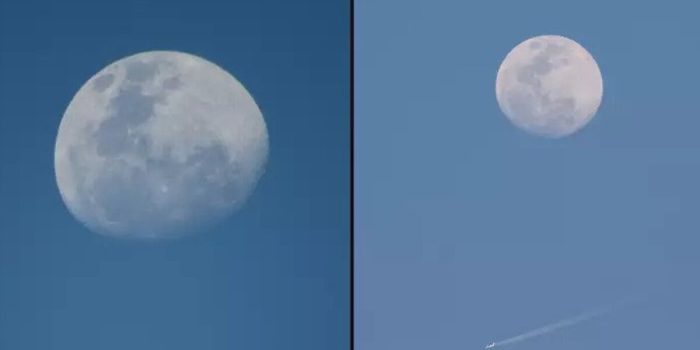The Moon, a celestial object often associated with cheese, lunar exploration, and nocturnal illumination, occasionally makes a surprising daytime appearance. Far-right conspiracy theorist Stew Peters expressed alarm at the Moon’s presence in the afternoon, posting a photo with the caption suggesting it wasn’t supposed to happen. However, this misconception stems from a lack of understanding about the Moon’s behavior.
“This full Moon is out in the middle of the day. That’s not supposed to happen.”

Contrary to popular belief, the Moon doesn’t adhere strictly to a nighttime schedule. Solar eclipses, for instance, occur when the Moon crosses the path of the Sun, illustrating its daytime visibility. Illuminated by the Sun’s reflection, the Moon spends a significant portion of its time in the daytime sky, moving through four principal phases during its orbit.
Planetary geologist and NASA scientist Sarah Noble clarified that the Moon’s visibility during the day depends on factors such as its proximity to Earth, orbital phase, and atmospheric conditions. During a full Moon, when it is opposite the Sun in the sky, it reflects sunlight and becomes fully visible. The Moon’s rising and setting times are also influenced by its position in orbit.

Noble encouraged sky observers to engage in the challenge of spotting the Moon during the day, emphasizing it’s changing setting time, approximately 50 minutes later each day. She highlighted the days before a full Moon, where it rises before sunset in the eastern sky, and the days after a full Moon when it sets in the western sky after sunrise.
In essence, the Moon’s visibility during the day is a product of its celestial dance with the Earth, the Sun’s illumination, and atmospheric conditions. Dispelling the notion that the Moon strictly adheres to a nocturnal role, scientists like Sarah Noble invite people to stay observant and enjoy the dynamic aspects of our celestial neighbor.

Noble continued: “During a full Moon, the Moon is opposite the Sun in the sky. That’s why we can see the full face of the Moon reflecting sunlight.
“As the Earth rotates, the Moon rises just as the Sun sets, but just on that one day of the month. In the days before a full Moon, if you look in the eastern sky, you can find the almost full Moon rising before the sun sets.
“And the days after a full Moon, you can look in the western sky and find the Moon setting after the Sun has come up.”
She added: “It will keep you on your toes.
“It sets about 50 minutes later each day as it marches through its phases. So, keep your eyes peeled and keep looking up.”


